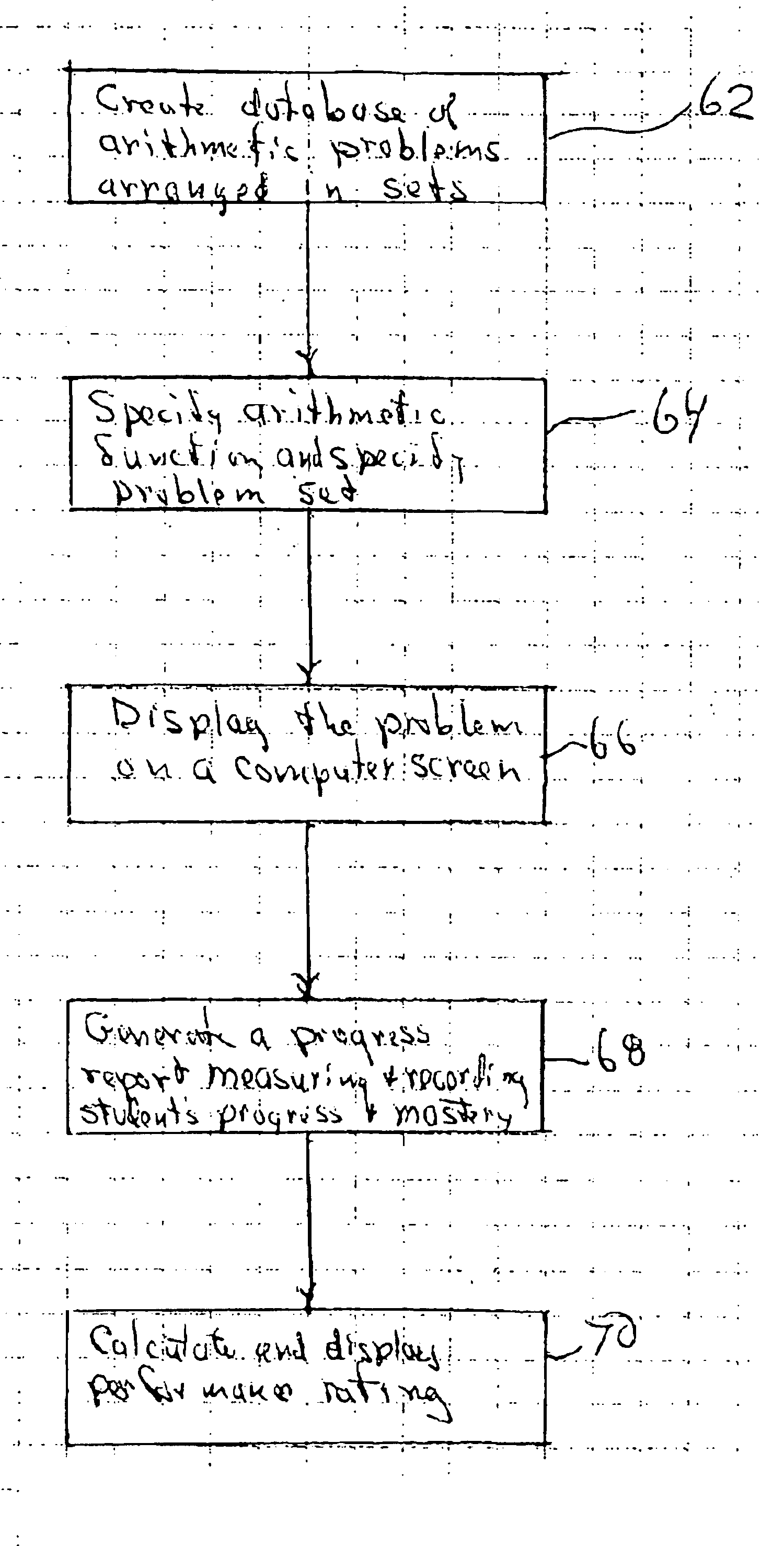System to teach, measure and rate learner knowledge of basic mathematics facts
a technology of learning facts and learning methods, applied in the field of system to teach, measure and rate learner knowledge of basic mathematics facts, can solve the problems of student population failing to master even the most simple of arithmetic calculations, and abandoning the use of rote learning, so as to minimize the boredom of rote learning
- Summary
- Abstract
- Description
- Claims
- Application Information
AI Technical Summary
Benefits of technology
Problems solved by technology
Method used
Image
Examples
Embodiment Construction
The teaching system of this invention will be described with reference first to FIG. 1 which diagrammatically depicts the teaching system 60 of this invention. A database 62 that contains all possible arithmetic problems in addition, subtraction, multiplication, and division of single digit numbers, as well as the answers to those problems, is first created. Those problems are arranged in a plurality of sets, each set representing a specified level of difficulty.
A student using the system then specifies at 64 the arithmetic function to be studied and selects a problem set according to the level of difficulty desired for that particular user session. Problems randomly chosen from the selected problem set are displayed on a computer screen at 66 and the system then guides the student in its use following the procedures illustrated by the logic diagrams of FIGS. 2, 3, and 4. At the end of the user session, a progress report that measures and records that student's progress and mastery ...
PUM
 Login to View More
Login to View More Abstract
Description
Claims
Application Information
 Login to View More
Login to View More - R&D
- Intellectual Property
- Life Sciences
- Materials
- Tech Scout
- Unparalleled Data Quality
- Higher Quality Content
- 60% Fewer Hallucinations
Browse by: Latest US Patents, China's latest patents, Technical Efficacy Thesaurus, Application Domain, Technology Topic, Popular Technical Reports.
© 2025 PatSnap. All rights reserved.Legal|Privacy policy|Modern Slavery Act Transparency Statement|Sitemap|About US| Contact US: help@patsnap.com



